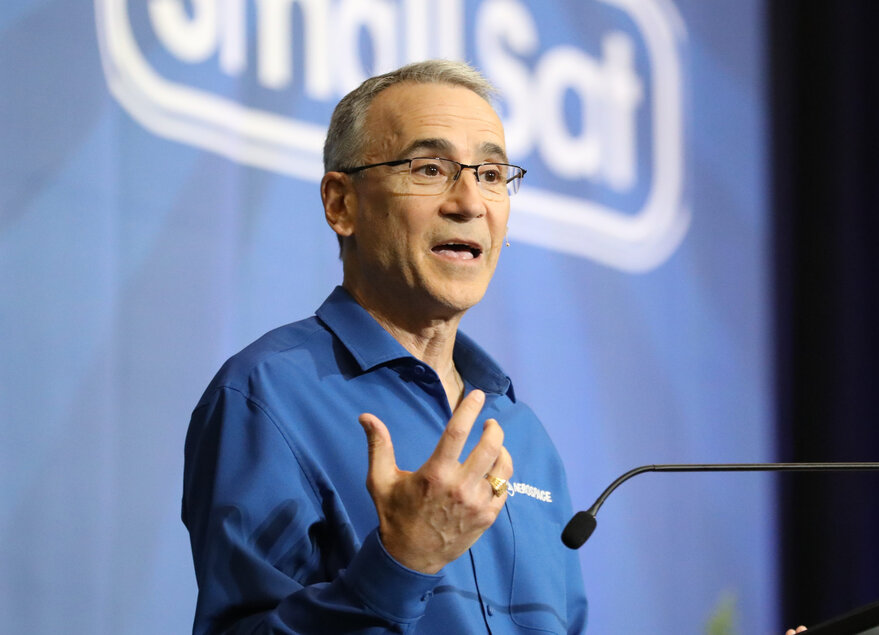Products You May Like
LOGAN, Utah – In the future, small satellites are likely to operate in swarms thanks to advancements in autonomy, artificial intelligence, collaboration and networking, Steve Isakowitz, Aerospace Corp. president and CEO, said Aug. 5 during a keynote presentation at the Small Satellite Conference here.
To demonstrate his point, Isakowitz began his keynote with a video from the science fiction film Star Trek Beyond, showing a smallsat swarm attacking and defeating the U.S.S. Enterprise.
“It’s imperative we have the kind of future with swarms of these smallsat technologies,” Isakowitz said. “And it’s really important we get there before the Klingons do.”
In all seriousness, Isakowitz lauded the smallsat community for its commitment to entrepreneurship, innovation and risk-taking. Skeptics once dismissed cubesats and smallsats as little more than toys, but “the smallsat revolution is here to stay,” Isakowitz said. “Everybody needs to get onboard.”
At the same time, Isakowitz cautioned that cubesats and boxy small satellites could one day be replaced by different form factors. The Aerospace Corp. and NASA, for example, are experimenting with Disksat.
“DiskSat is a flat satellite with a lot of surface space for solar power and another side for sensors that allow us to do very capable things,” Isakowitz said.
New Launch Vehicles
Additional questions looming over the small satellite sector are tied to a new generation of launch vehicles. SpaceX is preparing for another Starship test flight. Blue Origin’s New Glenn rocket is scheduled to send a small satellite to Mars in September.
This new generation of launch vehicles with tremendous capability and payload volume could reduce the cost of space access dramatically. As a result, satellite operators may continue to take advantage of inexpensive commercial-off-the-shelf technologies and mass production, but worry less about spacecraft size and weight.
The future satellites might “just happen to be 1,000, 2,000 or 3,000 kilograms,” Isakowitz said.”This new generation of launch vehicles could unleash that.”
Whatever the mass or form factor, Isakowitz encouraged organizations to keep embracing the “kind of entrepreneurship, innovation and risk-taking” that the smallsat sector exhibits.
Aerospace’s Role
Aerospace, one of the earliest adopters of miniature satellites, continues to experiment with smallsat technologies. The federally funded research and development center’s first picosatellites were “not much bigger than my wallet,” Isakowitz said. “It was a dumb version of an iPhone run on batteries. It had no attitude control.”
Since small satellites and cubesats have been widely adopted, Aerospace provides facilities for technology testing. Electric propulsion companies, in particular, often test advanced propulsion systems in Aerospace test chambers.
In addition, Aerospace is developing advanced technologies including a prototype motor to help satellites deorbit on demand.
Sustainability
“Today we have 9,000 active payloads in space but we also have 26,000 pieces of debris over 10 centimeters in size that we’re able to track,” Isakowitz said. “We believe there are over a million pieces that are over a centimeter in size.”
“We are trashing space,” he added. “We have got to be more responsible for it as we go forward to make sure that we can sustain it.”
